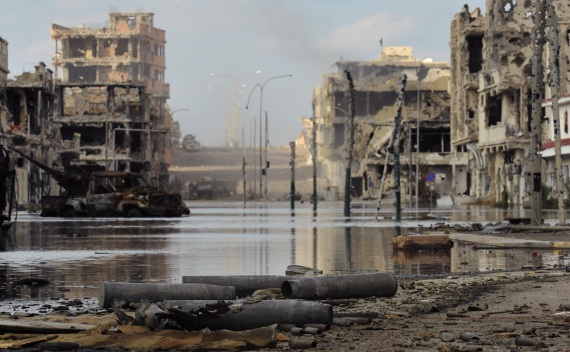R2P and International Responsibility
More on:

I have a piece featured today on Foreignpolicy.com that contributes to the debate on the future of humanitarian intervention in the wake of the NATO-led intervention in Libya. Specifically, the debate participants all considered the effect of Qaddafi’s removal from power on the emerging concept of the Responsibility to Protect (R2P).
My contribution addressed an understudied, unintended consequence of the broadening international acceptance and demonstrable enforcement of R2P: given that nuclear weapons are the only reliable means of deterrence for a conventional military intervention targeting regime change, R2P could serve as an incentive for authoritarian regimes to pursue the bomb.
Many proponents of R2P misuse the term as a catchall for actions by a sovereign nation that put its civilian population at risk. Some advocates go further and contend that R2P includes a binding legal requirement to militarily intervene in a country that intentionally harms its own people.
In order to clear up any misconceptions, it is useful to quickly review the definition of R2P, and what that definition means and does not mean for the international community. The legal mandate and formal guidance for R2P is found in three core agreements and reports:
- World Summit Outcome, September 15, 2005.
“Each individual State has the responsibility to protect its populations from genocide, war crimes, ethnic cleansing and crimes against humanity. This responsibility entails the prevention of such crimes, including their incitement, through appropriate and necessary means. We accept that responsibility and will act in accordance with it.”
- Report of the Secretary General, “Implementing the responsibility to protect,” January 12, 2009.
- Report of the Secretary General, “Early warning, assessment and the responsibility to protect,” July 14, 2010.
Of the three documents, the 2009 report outlines the main framework of the R2P and presents a three pillar strategy, with the caveat that “there is no set sequence to be followed from one pillar to another, nor is it assumed that one is more important than another.”
- “It is the enduring responsibility of the State to protect its populations, whether nationals or not, from genocide, war crimes, ethnic cleansing and crimes against humanity, and from their incitement.”
- “It is the commitment of the international community to assist States in meeting those obligations…which could entail confidential or public suasion, education, training and/or assistance.”
- “It is the responsibility of Member States to respond collectively in a timely and decisive manner when a State is manifestly failing to provide such protection.” This can include peaceful persuasion, targeted diplomatic and economic sanctions, and arms embargoes. In addition, “no strategy for fulfilling the responsibility to protect would be complete without the possibility of collective enforcement measures, including through sanctions or coercive military action in extreme cases.”
It is important to understand that within the three pillar strategy, military force is only one of the “timely and decisive” tools at the disposal of the international community, which must be authorized by the Security Council. Moreover, the third pillar does not explicitly endorse regime change as the objective of military force in R2P interventions, but rather to protect populations from the four specified crimes and violations listed in the first pillar.
My fellow debater, Gareth Evans, poses a thought provoking question on the future application of R2P: in the case of intervention to stop atrocities, is it all or nothing? Although sovereignty does not confer impunity on government to do whatever it wishes within its territory, R2P does not allow the international community free reign to use military force to implement and enforce the third pillar. Rather, force is only to be exercised as an option of last resort in “extreme cases” to protect the civilian population, not to remove the offending regime.
More on:
 Online Store
Online Store